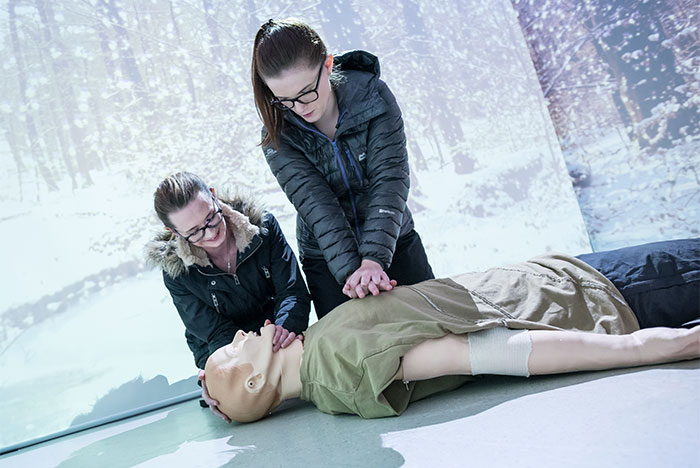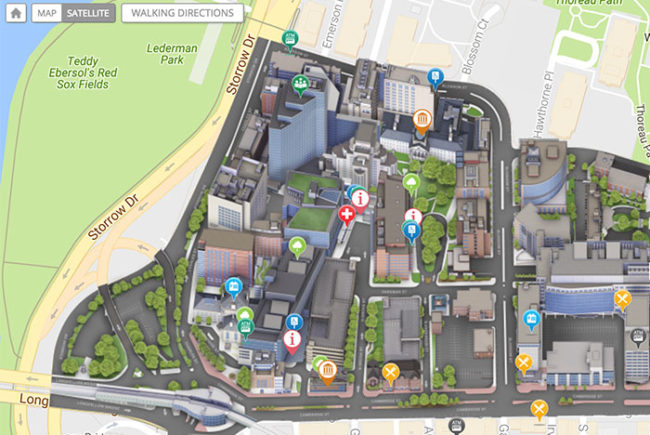
University of Salford's new immersive simulation room gives students life-like settings as a training ground.
Students receive emergency medical training in virtual immersive settings
The University of Salford in Manchester, England, has built an immersive simulation room that enables students who are training for clinical careers to practice dealing with any kind of incident in a virtual setting. Cameras project realistic scenes onto three walls of the room and the floor while sounds are piped into the room by technicians from a separate control room. The room can transform into everything from an ambulance to an outdoor space.
“Simulation plays an essential role in how we educate our students to prepare them for real-life practice in various health and social care settings across the region,” says Margaret Rowe, dean of the university’s School of Nursing, Midwifery, Social Work and Social Sciences. “However, this new facility takes simulation to a whole new level, enabling us to replicate any scenario in a safe and supportive environment. The University of Salford is the largest education provider of nurses and midwives in the Northwest and the use of simulation provides limitless potential for students from across the university to develop their clinical skills to meet the high-quality requirements of the United Kingdom's National Health Service.
University opens 3-D printing institute
The Queensland University of Technology (QUT) in Australia is opening a dedicated space for 3-D printing. Called the Herston Biofabrication Institute, it will occupy two floors at the Herston Health Precinct and specialize in tissue engineering, clinical scanning and visualization, and 3-D modeling and manufacturing.
“The Institute is set to become a world leader in tissue regeneration,” says Associate Professor Mia Woodruff of QUT’s Institute of Health and Biomedical Innovation. “Importantly, we will engage with industry to enable new technologies to be developed and translated to the clinic faster than currently possible and we look forward to engaging with new and existing partners.”
The institute will open in 2017 with 50 to 60 researchers and clinicians in chemistry, biology, physics, technology, mathematics, engineering and applied clinical practices.
St. Jude transports patients to another world with interactive rooms
Interactive walls at St. Jude Children’s Research Hospital transports young patients to a different world. Inside the hospital’s Imagine Room, kids can use touch buttons to play games, watch videos, talk with friends and family via a webcam and enjoy interactive light displays.
In addition, each of three inpatient floors has a 90-foot Journey Wall featuring a nature scene. The large digital screens emit sights and sounds, and with the push of a button, kids can call up facts about the habitat and the creatures that live there.
Check out the video below for a peek of the interactive spaces.





